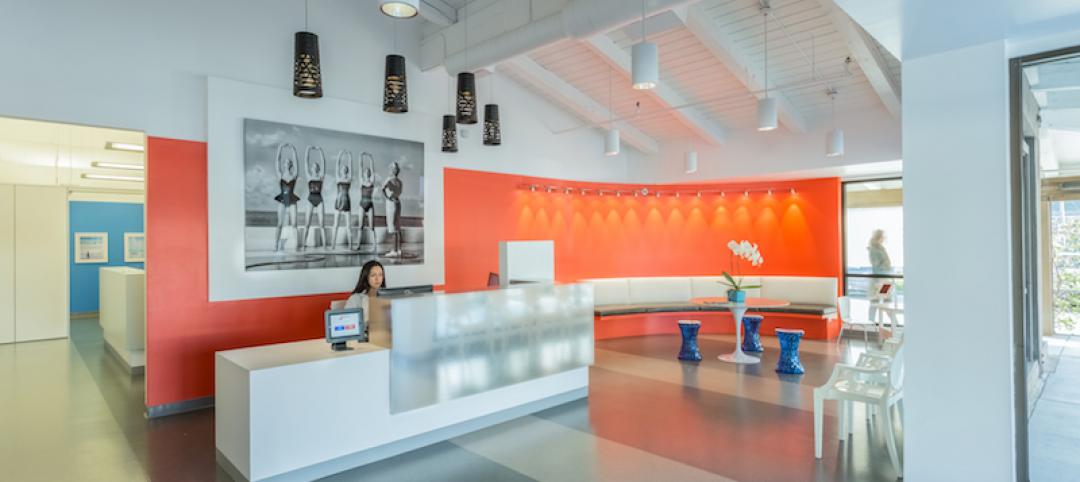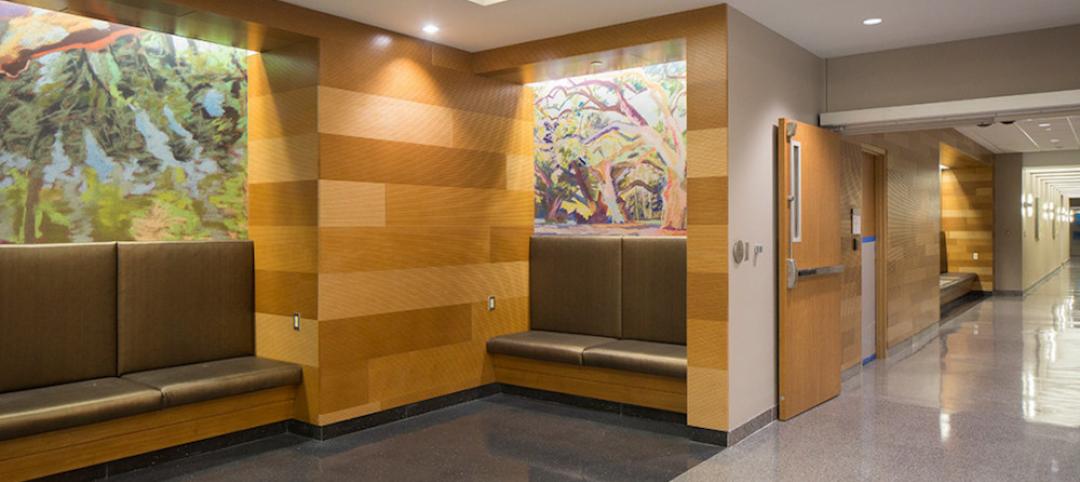Companies are realizing the importance and benefits of supply chain management to boost service, improve financials, and reduce operating costs. Efficient supply chains enable companies to be more competitive in the marketplace. Effective supply chain organizations are designed to deliver goods and services fast, cost effectively, and without compromising quality. Optimized and modern supply chain organizations align strategically with end-to-end business processes, realizing market and economic value and providing a competitive business advantage.
CBRE’s Project Management (PJM) platform delivers exceptional outcomes through its strategic supplier partner program, FUSION. With an estimated annual project spend nearing $75 billion globally, CBRE PJM relies on the value of the FUSION program to provide:
• Exceptional project delivery
• Accelerated completion of various capital expenditure projects
• Harnessed buying power of CBRE collectively
• Best-value solutions
Delivering Exceptional Outcomes
Organizations are often consumed with low-cost solutions. Although cost savings are appealing, it’s important to consider a holistic approach to offering best-value and total cost of ownership. If procured goods or services are predicated on unit price alone, there is a myriad of ancillary benefits that most strategic suppliers struggle to offer due to the inability to scale and invest with the needs of the business, or as demand fluctuates. In fact, average acquisition costs account for roughly 20–35% of total cost for most products and services. The balance and majority of total cost is comprised of costs associated to operations, training, maintenance, warehousing, environmental, quality, transportation, and consideration for the salvage value. By contrast, the FUSION program is a tool to enhance operational performance and ensure objectives are met on time and under budget. The program is extremely flexible with client needs allowing project-based solutions to offer the most favorable outcomes. FUSION is not only a mechanism to leverage spend, but a marketplace differentiator built by purchasing category and on the comprehensive foundation of:
• Speed to market
• New product innovation
• New product development
• Increased quality
• Best cost options
• Turnkey solutions
• Program scale
Early Engagement
With sufficient planning and early supplier engagement on projects, FUSION can maximize savings potential and accelerate project completion without compromising quality results. To capitalize on the benefits the program can offer, it’s critical to engage FUSION supplier partners at the onset of project design, or as initiatives are being conceived within architect and engineering (A/E) organizations in the planning phase.
Generally, optimal value is realized when early supplier engagement is employed at the first stages of concept development. An organization’s competitiveness depends on the amount, quality, cost, and timing of its materials and supplies, and the effectiveness of its supply chain. Factors include:
• Materials
• Prototypes
• Value-engineering
• Manufacturing processes
• Packaging
• Logistics
Considered a fundamental activity, CBRE actively engages its suppliers early as 80% of product costs are identified and committed to during the design phase.
Cost Savings
Hard cost savings and avoidances are paramount to any organization seeking to optimize its supply chain, but also to deliver value-added goods and services. With an emphasis on supplier relationship management in critical spend areas, FUSION supplier partners not only create sustained value for clients but constantly seek continuous improvement opportunities to develop a shared strategy and roadmap that include savings initiatives, new product offerings/development, and end-of-life materials. This collaborative approach lends itself well to delivering additional benefits that include:
• Extended warranties
• Extended payment terms
• Product availability and consistency
• Life-cycle services (sustainability initiatives)
• Reduction of operating costs
The ability to deliver double-digit cost reductions from one category of spend to the next has a profound impact on capital budgets and client outcomes. FUSION’s strategic supplier-partner program is heavily focused on various metrics including key performance indicators (KPIs), service level agreements (SLAs), continuous benchmarking, and spend analysis to deliver the greatest client experience with the most positive result.
Proactively Managing the Program
It’s important, if not critical, to ensure effectiveness measurements are in place to reflect the organization’s strategic contribution. As FUSION evolves, CBRE is continuously seeking to identify and deploy additional baseline metrics within the program. Which allows a more personalized approach in delivering metrics that tie back to each individual client, tailoring the output based on their needs.
Conversely, taking a “one-size fits all” approach may result in poor supplier performance and miss the mark on key client objectives and expected outcomes. These supplier measurement indicators will help create a cadence and sense of accountability that expands upon the day-to-day process, becoming more strategic in nature. Some examples used inside of the FUSION program include:
• Proportion of suppliers participating in early product design or other joint value-added activities
• Supplier lead-time indicators
• Savings achieved using the sourcing program
• Supplier quality levels, cost performance, and delivery performance compared to other world-class performance targets
• Best practices for supplier performance improvement
The outcome of proactively measuring on a continual basis will result in a program that can deliver strategic value from one project to the next, but also serve as a benchmark to assess current and future state needs and trends.
Conclusion
FUSION will evolve over time as CBRE’s corporate business needs and objectives continue to shift in support of its clients’ needs from a regional and global perspective. CBRE will continue to listen intently to its clients, solving various challenges and providing ultimate client solutions. FUSION, as a program and client delivery mechanism, is equally as adept in responding to those ever-changing needs through a best-value solution. Remember, early supplier engagement is crucial to not only create sustained value for clients but to also discover continuous improvement opportunities and cost savings initiatives.
About the Author
Terry Doumkos is the Global Leader of Strategic Sourcing Project Management and Global Leader of CBRE’s FUSION Program.
Related Stories
| Aug 8, 2016
Top 80 Healthcare Engineering Firms
AECOM, Jacobs, and WSP | Parsons Brinckerhoff top Building Design+Construction’s annual ranking of the nation’s largest healthcare building sector engineering and E/A firms, as reported in the 2016 Giants 300 Report.
| Aug 8, 2016
Top 100 Healthcare Construction Firms
Turner Construction Co., McCarthy Holdings, and Skanska USA top Building Design+Construction’s annual ranking of the nation’s largest healthcare building sector construction and construction management firms, as reported in the 2016 Giants 300 Report.
| Aug 8, 2016
Top 90 Healthcare Architecture Firms
HDR, Stantec, and Perkins+Will top Building Design+Construction’s annual ranking of the nation’s largest healthcare building sector architecture and A/E firms, as reported in the 2016 Giants 300 Report.
Healthcare Facilities | Jul 25, 2016
AIA selects seven winners of healthcare building design award
The National Healthcare Design Awards recognizes functional hospital projects that solve aesthetic, civic, urban, and social concerns. Recipients were selected in three categories this year.
Architects | Jul 22, 2016
5 creative approaches to finish standards
With the right mindset, standards can produce great design for healthcare facilities, as VOA's Candace Small explores.
Healthcare Facilities | Jul 20, 2016
Process mapping simplifies healthcare design
Charting procedures and highlighting improvement opportunities can lead to developing effective design strategy simulations. GS&P’s Ray Wong writes that process mapping adds value to a project and bolsters team and stakeholder collaboration.
Sponsored | Building Technology | Jul 11, 2016
3D scanning technology solves University of Iowa Children’s Hospital’s curved wall curveball
Gilbane Building Company utilized advanced 3D scanning technology as part of a virtual design and construction (VDC) solution to ensure quality control throughout the lifespan of the project
Healthcare Facilities | Jul 7, 2016
How to navigate the tedious regulatory approval process in healthcare construction
Compliance processes can be handled efficiently with a little bit of foresight. CBRE's Patrick Duke, Kyle Marden, and David Vollmer evaluate the regulations and permits that may be required and the process for incorporating approvals into projects.
Healthcare Facilities | Jul 1, 2016
AIA releases summary of the 2016 Design and Health Research Consortium
Consortium members discussed how architects, designers, and health professionals can best apply design and health research in their communities.
Healthcare Facilities | Jun 19, 2016
Rapid growth of retail health clinics presents new choices for consumers, payers, and providers
Service expansions help dealers boost clinics’ profitability.
















